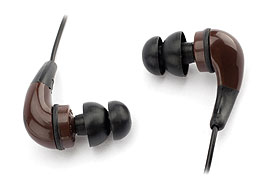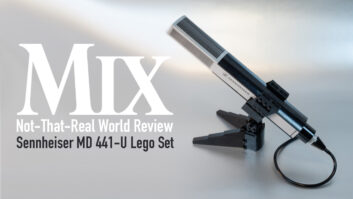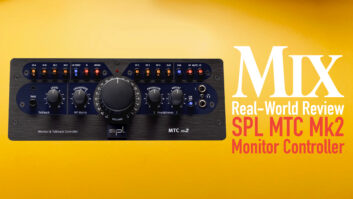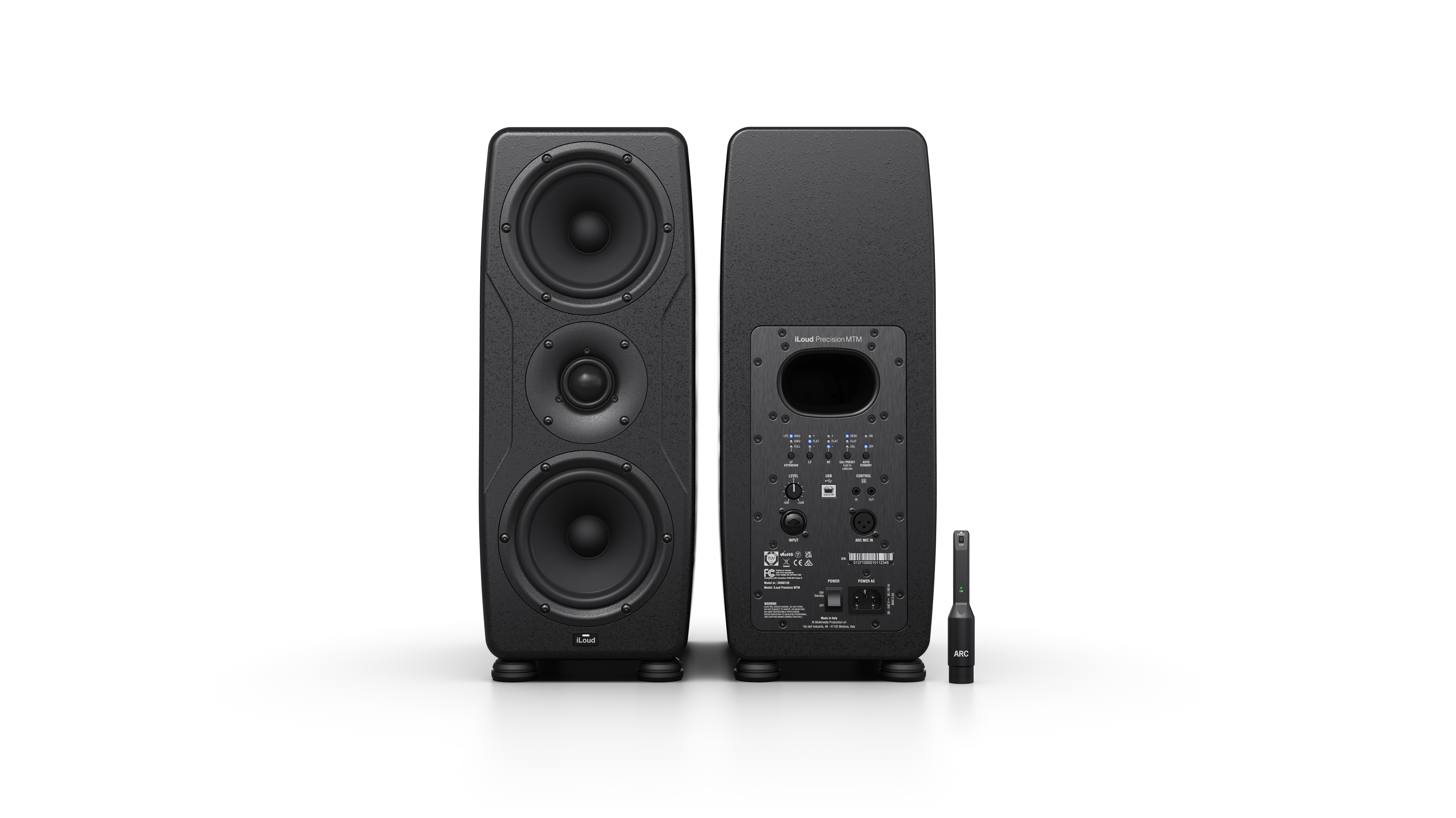
Getting intimate with your mix is the best way to ensure that you’re covering all the sonic details and not leaving loose ends. It’s often the low-level mix elements that can come back to bite you later. For instance, a shaker, tambourine, reverb tail or delay can sound balanced in a mix heard out of speakers in a room, especially at the end of a long day when your ears are tired. But those mix items can sound out of place when you listen back with fresh ears.
Modern engineers are listening to audio in multiple playback environments, so having a mobile transducer uncolored by the room and in close proximity to your head can be an essential gut-check in the mixing process. Referencing at low to medium level on a great set of headphones or In-Ear Monitors can make all the difference, giving you fresh perspective, even after a long day of listening.
For this review, we’re putting the spotlight on three universal-fit, pro-level IEMs ranging in price from $199 to $399, each offering a range of fitting, storage and transport options. Certainly, high-end transducers with custom ear molds are at the top of the line, but these can cost $1,000 or more–which is out of reach for many. The products reviewed here sit squarely in the middle between custom options and inexpensive, generic models that lack the quality necessary for a working audio pro.
Apart from the necessary break-in time needed to achieve optimal listening results (all the units here sounded better over time and took 10 to 20 hours to break in), it’s very important to keep the following five things in mind when evaluating in-ear listening devices:
1. Fit is critical: The more fitting options (aka, isolating ear tips) you have, the better your chances of getting the right fit. Grabbing the top of the ear and lightly pulling up and back when fitting your IEMs is a great way to get them seated correctly in the ear canal.
2. Know your source: IEMs can be brutally honest, revealing MP3 hash, including shrunken stereo image and nasty artifacts, so know that your listening experience will only be as good as the source. It’s also important to have a great headphone amp and DAC when evaluating IEMs. For this review I listened exclusively through a Benchmark DAC1 with its stellar, high-voltage headphone amp.
3. Listen at safe levels: By design, IEMs place the transducer dangerously close to your non-renewable, factory-installed listening resource—your eardrums. Having gain down to zero when fitting your IEMs is good practice.
4. Custom fit beats universal: Some affordable, universal-fit IEMs can be retrofitted with custom earpieces, kicking them up a notch in the fit department for not a lot of money.
5. Cable handling noise: All IEM cables transfer noise when handled, and it gets louder the closer you are to the transducer. This varies from product to product and is something you should test when buying.
As always, try them on for size before purchase. All ears are different. Here, then, are the contenders, in alphabetical order.
FUTURE SONICS ATRIO M5 PROFESSIONAL EARPHONES
Future Sonics is a highly respected manufacturer of custom-fit IEMs like the mg6pro and mg5pro, which are used extensively in live sound reinforcement and other applications. The Atrio M5s are the company’s universal-fit IEMs ($199) featuring new 10mm, MG7 dynamic drivers. Other features include the 51-inch QuietCable II, promising low handling noise, 30dB ambient noise rejection, 1/8-inch mini plug and a one-year limited warranty. The M5s come in five colors and include seven pairs of foam and silicone ear tips and a loop-cleaning tool.
The M5s ship with a discounted GoCustom option (20 percent), which allows the user to step up to a tailored fit. This is highly recommended, as the M5s only come with three pairs of silicone ear tips. The foam ear tips are great the first time you wear them but quickly lose their elasticity and ability to cancel ambient noise. In my listening tests, the Atrio M5s were my least favorite of the three units. Although the bottom end is adequate, midrange frequencies are decidedly forward in a narrow range, which tended to unbalance my mixes and overshadow the top end. It’s possible that the custom fit option can overcome this, but as is, I found the listening experience unsatisfying.
At $199, the Atrios are the lowest priced of the units tested here—a bargain, especially with the discounted custom fit option—and are a definitive step up from lower-priced IEMs. As this is a subjective evaluation, I recommend that you still consider the Atrio M5s and give them a listen for yourself.

MONSTER TURBINE PRO GOLD AUDIOPHILE IN-EAR SPEAKERS
The Monster Turbine Pro Gold IEMs ($299.95) come in a package large enough to hold the bountiful and standard group of accessories for storage and assuring a near-custom fit. Included are two leather pouches, one hard, one soft; more than 20 silicone ear tips of varying types and sizes; a flexible and clever carrying “widget” for storing/transporting up to six pairs of ear tips; a cleaning cloth; adjustable ear hooks; all metal construction; and an 1/8-inch to ¼-inch adapter.
The cable is more substantial than the others tested here and promises the same features as Monster’s other top-end cable products. Although the cable was easier to handle and less prone to kinks and other common small-cable issues, it had the highest handling noise of the units I tested. However, this may be because the Gold IEMs had the best fit and rejection of ambient sound, which certainly adds to their ability to transfer handling noise through the cable. The noise transferred here was still acceptable and not a deal breaker.
The Monster Turbine Pro Gold IEMs provided a great listening experience. They are very musical across the entire frequency range, with an open top and faithful representation of bass and midrange frequencies. Although they didn’t have the robust bass or adjustability of the Sennheiser IE 8s, I felt the bottom end was well balanced, especially when fitted properly. The abundance of ear tips makes it possible to get a nearly perfect fit. At $299.95, the Gold IEMs provide the best bang for the buck here and should be on your short list when IEM shopping.

The Sennheiser IE8s include adjustable LF on each earpiece, while the Monsters come with 20 possible ear tips.
SENNHEISER IE 8 PREMIUM AUDIOPHILE IN-EAR NOISE-ISOLATING HEADPHONES
The Sennheiser IE 8s ($399.95) ship in a box-within-a-box, the smaller of which is meant for travel. It holds the IEMs, three silicone ear tips (small, medium, and large), ear hooks, a cleaning/tweaking tool (more later) and a dehumidifier section that holds replaceable salt pads assuring optimal humidity during storage. There is a slick sliding cover that protects all these bits and keeps everything where it should be, even when tossed in a backpack or suitcase.
The IE 8s offer a unique low-frequency adjustment on each earpiece, which can be altered with the supplied tweaking tool. Even with this feature set at its lowest, the overall balance is a bit bottom heavy, which is not so bad considering the universal fit may not always be spot-on. In other words, the low end would suffer less if you didn’t get the fit quite right. Nonetheless, I found that keeping it all the way off gave me the closest experience I expected from my mixes—all the way up was way too hyped for my taste.

The IE 8s were the loudest tested here and offered the most robust low end via its bass adjustment. Cable handling was as expected from an IEM and the fit was excellent despite offering fewer ear tips than the closest competitor reviewed here. Overall, the IE 8s offered a great listening experience and appear to be well worth the money.
In perspective, it’s a close call between the Turbine Pros and the IE 8s; each merits a close listen to hear, fit and feel these products considering their $100 price difference.
Kevin Becka is
Mix
’s technical editor.







